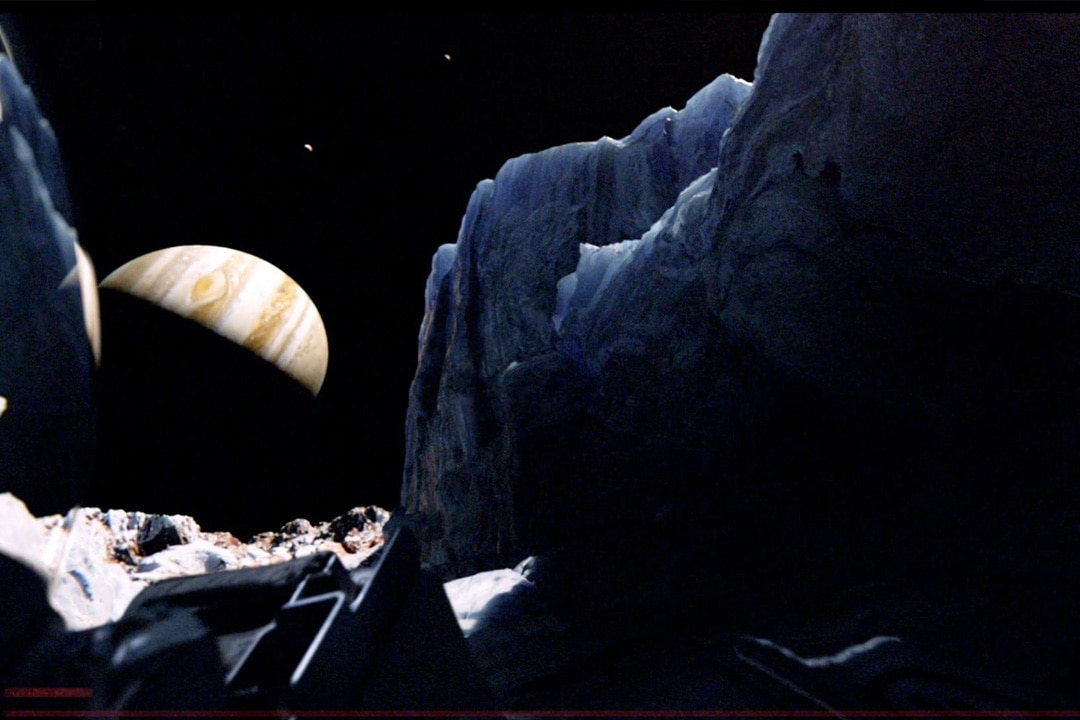Create a free profile to get unlimited access to exclusive videos, sweepstakes, and more!
NASA Measures Enough Oxygen for 1 Million Humans on Europa, But Perhaps Not Enough for Aliens
That's lower than we thought and potentially bad news for life on Europa.

Sebastián Cordero’s 2013 sci-fi flick Europa Report (streaming now on Peacock) tells the tale of the ill-fated Europa One, the first crewed mission to Jupiter’s icy moon Europa. Scientists (on screen and in the real world) are interested in Europa because it checks a lot of the boxes for a potentially habitable world.
From orbit, Europa is a seemingly solid ball of ice nearly 2,000 miles across. But below its frozen icy surface lies a liquid water ocean where life might exist. Tidal interactions between Europa, Jupiter, and Jupiter’s other moons create cracks in the ice where oxygen and other molecular goodies might be able to seep through. The question for scientists hoping to find aquatic aliens swimming the Europan seas was just how much oxygen was making its way into the water.
Europa Produces 1,000 Tons of Oxygen a Day
Surface interactions on Europa generate an estimated 1,000 tons of oxygen per day, according to a recent study published in the journal Nature Astronomy. That’s roughly enough breathable air to support a population of about 1 million humans or an equivalent amount of Europans.
On September 29, 2022, NASA’s Juno spacecraft flew within 220 miles (354 kilometers) of Europa’s surface. Using Juno’s Jovian Auroral Distributions Experiment (JADE), scientists measured the amount of hydrogen and oxygen ions being produced on the surface. Europa exists inside Jupiter’s powerful radiation belts where charged particles regularly bombard the surface. That energy splits water molecules into hydrogen and oxygen, some of which seeps through the ice to the ocean below.
For More on Europa:
JWST Finds New Evidence That Europa Could Harbor Life
First Closeup Picture of Europa in 20 Years Reveals Rugged Terrain and Degraded Crater
It May be Snowing Upside Down in the Water Beneath Europa’s Surface
By measuring hydrogen outgassing, astronomers were able to dial in on oxygen production rates, placing them right around 26 pounds (12 kilograms) per second, significantly lower than previous estimates. Europa could support a sizable human population, assuming we ever get it together enough to set up shop there, but it’s less likely that there is a robust ecosystem existing there now.
If there is life on Europa, it’s subsisting on a tighter oxygen budget than we previously supposed. That might be bad news for life on Europa, but it’s good news for the crew of Europa One. Given our updated oxygen production estimates, there probably isn’t enough to support giant subsurface monsters with a taste for human flesh.
Having finished its latest flyby of Europa, NASA’s Juno spacecraft is trading in ice for fire. It’s currently headed toward Jupiter’s lava covered moon Io, the most volcanic world in the solar system.
Find alien life and human death on Europa Report, streaming now on Peacock.

























